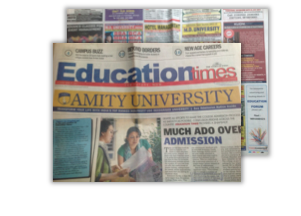India is the second largest source country for students who are looking to study abroad (China tops the list). However, the complexion of the study abroad market in India has changed a lot. Ten years ago, the USA and UK were the top destinations, but now we see Canada, Australia, New Zealand, Germany, Singapore, Malaysia, Ireland and other non-traditional destinations like The Netherlands, Sweden, Japan, China and Taiwan all actively wooing Indian students.
India is a huge country and can be quite confusing for someone who is trying to navigate the different markets for the first, second or even tenth time! It’s a place where institutions need staying power and a comprehensive strategy. And, of course, institutions need to speak to people on the ground in India as course preferences, purchasing power and attitudes to education all vary from region to region.
During my years helping all types of educational organizations recruit Indian students, I have experienced a number of different recruitment techniques and have outlined what I see as the key channels below:
Traditional recruitment channels
Agents
The UK, Ireland, Australia, Canada, Singapore and New Zealand all prefer to work with agent networks in India which are well established. If you are choosing to recruit this way, you should take recommendations from country promotion bodies like the British Council, Education in Ireland and Trade Commissioners entrusted with promotion of education brands, as well as independent companies that are very active in the market. You should definitely complete due diligence before making a final decision in terms of signing an agent. They will need management and continuous training on your products. It is also good to be aware that big agencies also have a sub-agency market which means that there are occasions when there is no direct quality control.
Student recruitment fairs
There used to be a time when the leading country promotion bodies such as the British Council were the only ones running education fairs for students. Today this space is crowded with a plethora of newspapers, recruitment agencies and destination promotion bodies running recruitment fairs. An example of a newspaper running an education fair is the Education Times Boutique exhibition. It is very important to select the fairs and the cities that you want to target as attending fairs involves a lot of money and effort. This medium still remains the most effective in terms of building the profile for an institution as it involves combined purchasing power for advertisements and shared venue costs which can be prohibitive for a single entity.
Print media advertisements
Nowhere is the diversity of India more visible than the print medium. There isn’t one single publication that is uniformly strong across India. In some pockets of India like Gujarat, Punjab, Kerala, and Tamil Nadu vernacular publications tend to do very well and parents and teachers who are influencers can be reached through them. Print media is expensive and the education sector over the last decade has tended to shy away from big advertisements precisely for this reason. And in peak recruitment months which happen to be from April to July in India, the newspapers are cluttered with advertisements in the education supplements which are now very common with leading dailies which have recognized the importance of the sector and pay special attention to the same.

Emerging recruitment channel
Digital advertisements and campaigns
India is one of the fastest growing markets for Facebook and Linkedin so institutions need to use digital media to reach their target audiences. With a growing smart phone culture amongst young people, this is the best way to access students. Universities could capitalize on this by tapping into the app market and texting students with details of higher education events or open days. The advantage of the digital medium is that it can be sustained over longer periods. Institutions should consider running relevant contests online that will capture the imagination of the students and will also build brand recall, whilst actively engaging in popular communication channels.
Click here to listen to a podcast with Lakshmi Iyer on What Matters to Prospective Indian Students.
Lakshmi Iyer is Head of Education of Sannam S4, which helps educational establishments develop their presence in India, set up agency networks and attract Indian students. www.sannams4.com

